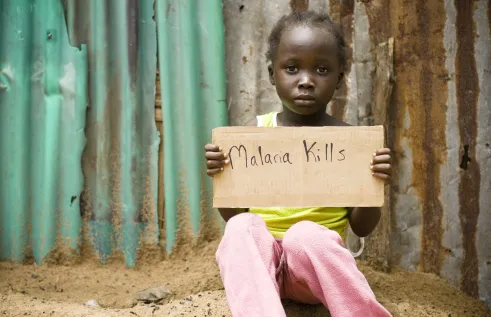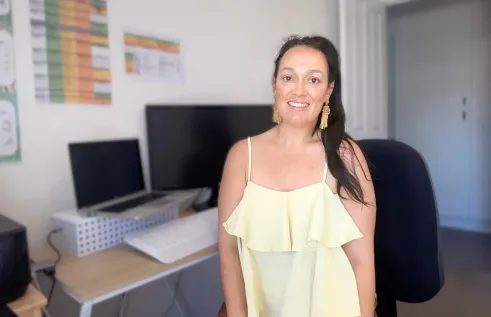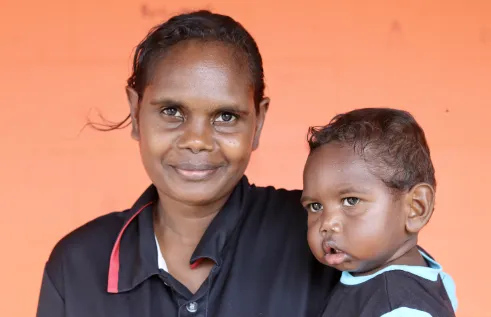Research impact
Lost in translation: In search of an end to the malaria epidemic

The World Health Organisation (WHO) has an ambitious goal to eliminate the malaria epidemic in the Asia Pacific by 2030. Word on the street may be that we’re tracking well, but you may be surprised to hear there are different types of malaria – and for some types, the treatments still have a long way to go. Researcher Kamala Ley-Thriemer is committed to the cause.
There has been tremendous progress towards the elimination of malaria caused by Plasmodium falciparum (which is the deadlier type of malaria that most of us have heard about). A significant drop in cases has been recorded. The intense control strategies used to control it are working.
But things don’t look as encouraging when it comes to Vivax malaria, another type of malaria.
“Vivax malaria is not as severe as other malaria forms.
But, we know that patients who have repeated episodes of the disease get a lot of other comorbidities if it’s not treated.
“They are much more vulnerable to other diseases and ultimately, also present increased mortality – just much later than those patients who get the more common falciparum malaria,” explains CDU researcher Dr Kamala Ley-Thriemer at Menzies School of Health Research.
A dormant demon
The Vivax malaria parasite lies dormant in a person’s liver, and can cause recurring episodes of the disease weeks or months after the initial infection. It doesn’t kill nearly as fast as other types of malaria, but it doesn’t mean it should be ignored.
“Every episode of Vivax malaria destroys a few red blood cells, so the patient gets more and more anaemic, and anemia is one of the main risk factors for other diseases,” says Dr Ley-Thriemer.
This type of malaria continues to exert huge public health burdens in the Asia-Pacific region and the Horn of Africa, particularly in remote communities, where access to healthcare is still poor.
Finding a way to treat everyone affected is imperative.
And that’s where things get tricky.
Lost in global translation
Even when we have drugs that work well, there is still the considerable challenge of applying them in the communities malaria affects.
Dr Ley-Thriemer is passionate about finding a solution. She’s leading a research project that is looking to translate the medical knowledge around vivax malaria into practical, actionable treatments that are sensitive to global contexts.
“A lot of our work is translational. How can we actually put available drugs and diagnostics into current practice in a way that is sensible and safe for the patients and can have an impact?” she explains.
A long way from the lab
Until recently the only available treatment to eliminate the liver forms of vivax malaria was primaquine (PQ), a drug that’s been on the market for 60-70 years.
While PQ is safe for most patients, the drug can induce a severe form of anaemia (called haemolysis) in patients with a particular enzyme deficiency . Because of this, the WHO recommended routine testing for this enzyme deficiency before administering PQ.
Where that gets tricky is exactly where it’s most needed. Poorly resourced communities, where vivax malaria is prevalent, don’t generally have access to this type of testing.
To bypass the need for the test, many countries have recommended administering a low dose of the PQ drug over 14 days. When supervised, this works pretty well, with an efficacy as high as 70 per cent in some settings. But in reality this is another obstacle.
“A lot of people just don't complete their course of PQ," explains Dr Ley-Thriemer.
"Adherence is really low and, if you don't take the drug it doesn't work. So, outcomes are suboptimal."
Finding the medical treatment is often not the biggest obstacle to curing a disease. The how is just as important as the what, if not more. And safe and effective roll out of treatment is standing in the way of having malaria eliminated.
Bring on the complexity
In response, Dr Ley-Thriemer and her team are researching different treatment options in a randomised trial. They are also looking into the feasibly of test and treat options in a real world scenario. Their focus is on Ethiopia, Indonesia and Cambodia.
“We need practical research if we’re going to have malaria out of the picture by 2030. If you’re a scientist, working on a project like this is very exciting,” says Dr Ley-Thriemer
“There are still a lot of questions about vivax malaria that need to be addressed. There’s a lot of complexity – both in the science and in the community take-up – and a multidisciplinary approach will be key to finding answers.”
CDU and Menzies School of Health Research are actively seeking Higher Degree by Research students to take part in projects like these. Scholarships are available. Learn more.
Related Articles

Filling the gap - Doctor of Pharmacy
Already in the health field and interested in expanding your skills and expertise? Our Doctor of Pharmacy degree is for you.
Read more about Filling the gap - Doctor of Pharmacy
From young mum to psychology graduate: Sherkeira’s decade-long journey with CDU
Read more about From young mum to psychology graduate: Sherkeira’s decade-long journey with CDUMeet Sherkeira, from Alice Springs in Australia's Red Centre – a First Nations mum with a remarkable story that proves that sometimes in life, the best things happen when things don’t go to plan.

How can we better support First Nations parents in remote communities?
Lexie Gregory's career has centred around supporting parents and families in remote communities, making Charles Darwin University the perfect place to start a Higher Degree by Research. She wants to ensure that parenting programs integrate First Nations worldviews into their design.
Read more about How can we better support First Nations parents in remote communities?